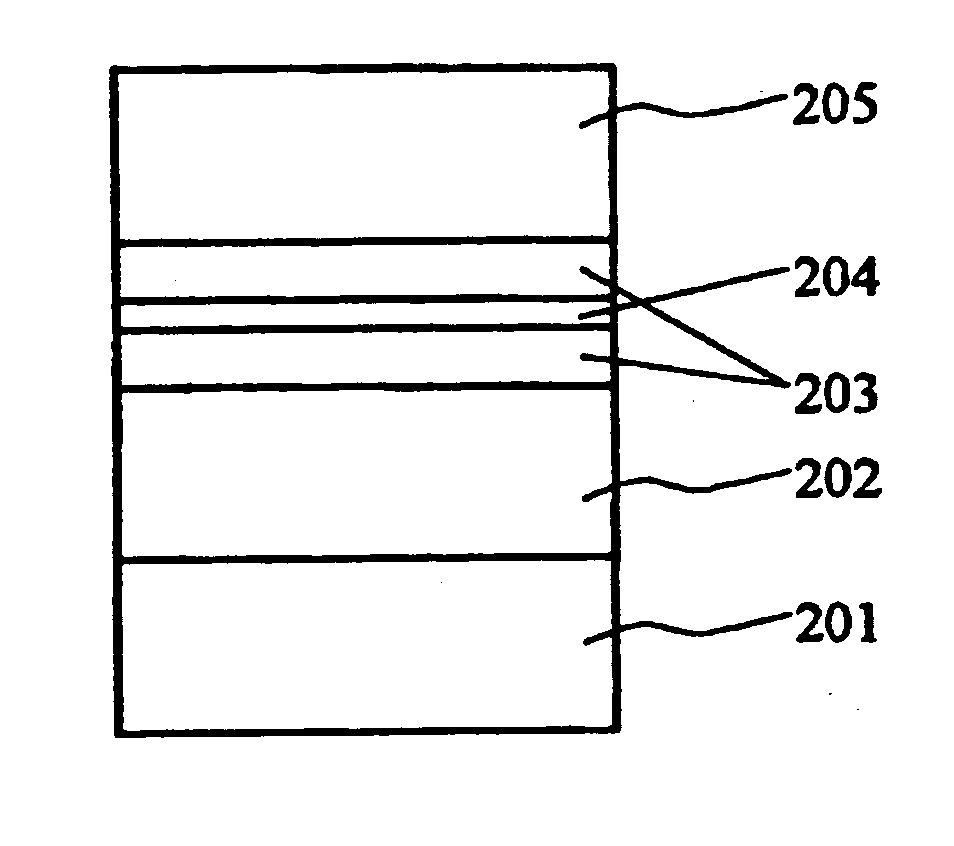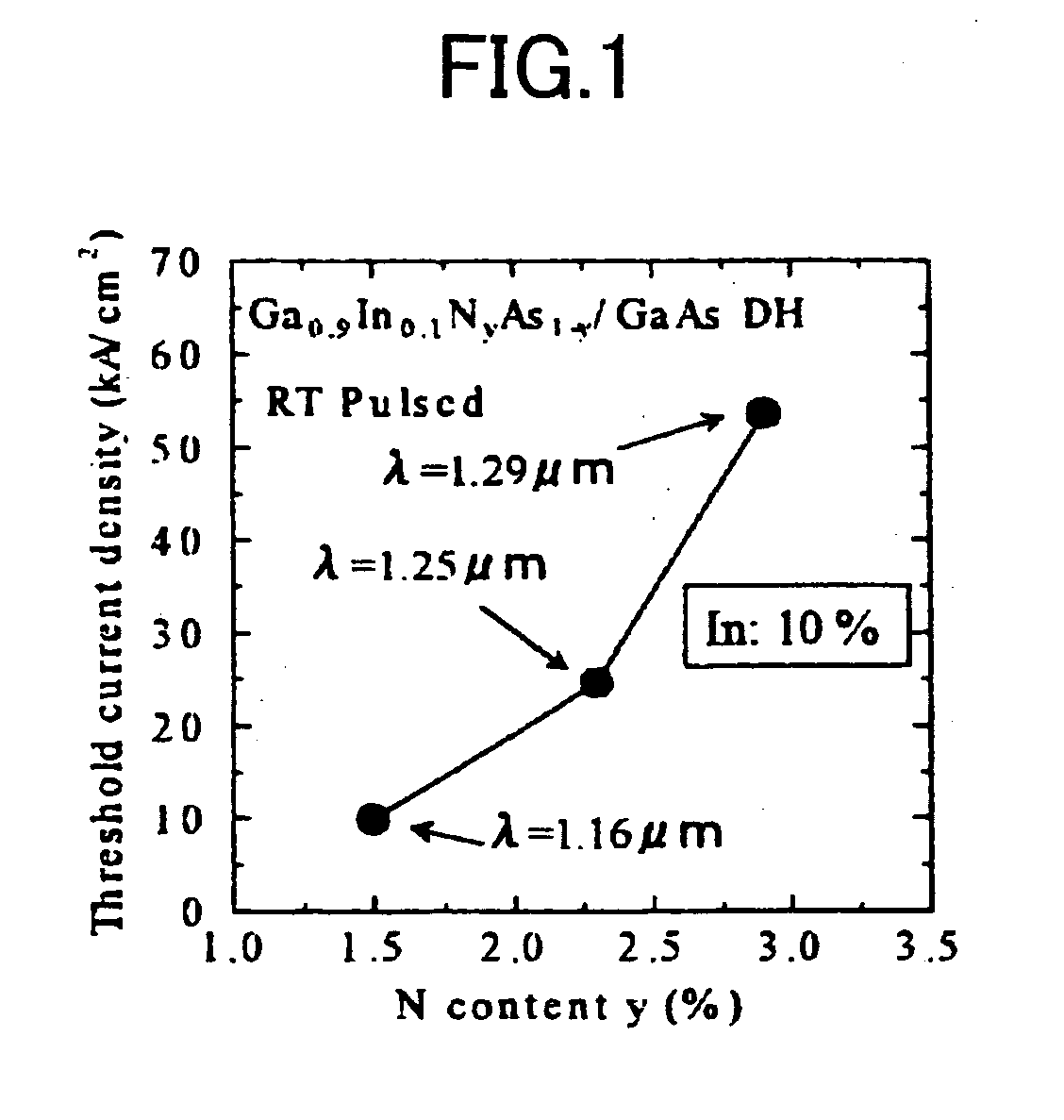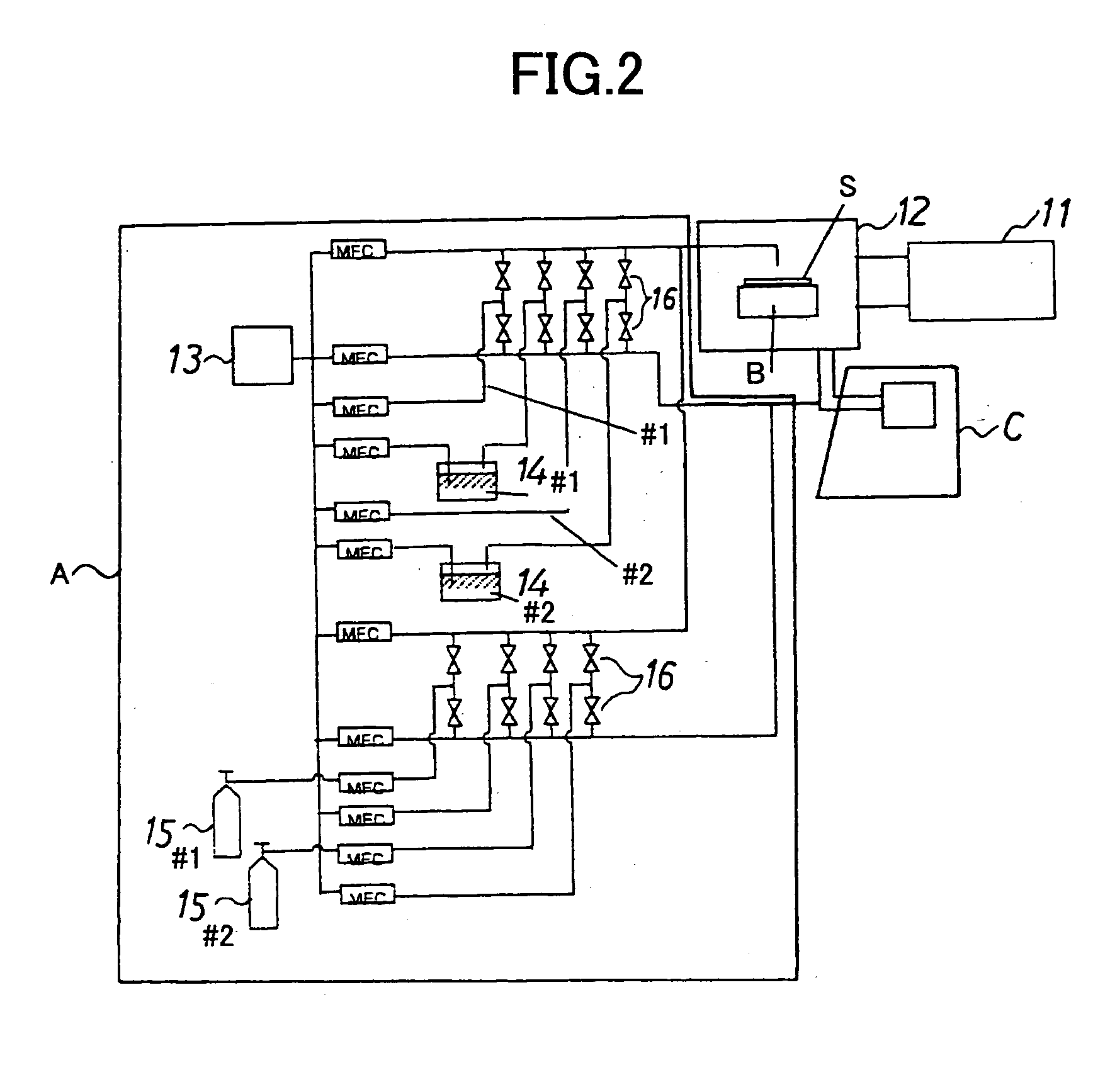Semiconductor light-emitting device, surface-emission laser diode, and production apparatus thereof, production method, optical module and optical telecommunication system
- Summary
- Abstract
- Description
- Claims
- Application Information
AI Technical Summary
Benefits of technology
Problems solved by technology
Method used
Image
Examples
embodiment 1
FIG. 12 shows the construction of a laser diode according to Embodiment 1 of the present invention.
Referring to FIG. 12, the laser diode is constructed on a GaAs substrate 901 of n-type and includes a buffer layer 902 of n-type GaAs formed on the substrate 901, a cladding layer 903 of n-type AlGaAs having a composition of Al0.4Ga0.6As formed on the buffer layer 902, a first lower optical waveguide layer 904 of GaAs formed on the AlGaAs cladding layer 903 and a second lower optical waveguide layer 905 of GaAs formed on the optical waveguide layer 904, and an active layer 906 of GaInNAs / GaAs multiple quantum well structure is formed on the second lower optical waveguide layer 905.
On the active layer 906, an upper optical waveguide layer 907 of GaAs is formed and a cladding layer 908 of p-type-AlGaAs having the composition of Al0.4Ga0.6As is formed on the upper optical waveguide layer 907. Further, a contact layer 909 of p-type GaAs is formed on the cladding layer 908.
The layered...
embodiment 2
FIG. 13 shows the construction of a surface-emission laser diode according to Embodiment 2 of the present invention, wherein those parts corresponding to the parts described previously are designated by the same reference numerals and the description thereof will be omitted.
Referring to FIG. 13, the surface-emission laser diode is constructed on the GaAs substrate 901 of n-type and includes a semiconductor multilayer reflector 1001 of n-type formed on the substrate 901, wherein a first lower spacer layer 1002 of GaAs is formed on the reflector 1001 and a second lower spacer layer 1003 of GaAs is formed further on the first lower spacer layer 1002. The nitrogen-containing active layer 906 of GaInNAs / GaAs multiple quantum well structure is formed on the second lower spacer layer 1003, and an upper spacer layer 1004 of GaAs is formed on the active layer 906. Further, an AlAs selective oxidation layer 1005 is formed on the upper spacer layer 1004 and a p-type semiconductor multilayer ...
embodiment 3
FIG. 14 shows the construction of a surface-emission laser diode according to Embodiment 3 of the present invention, wherein those parts corresponding to the parts described previously are designated by the same reference numerals and the description thereof will be omitted.
Referring to FIG. 14, the laser diode of Embodiment 3 has a construction similar to that of the laser diode of Embodiment 2 except that the entire layers from the lower spacer layer 1101 to the upper spacer layer 1104 form an Nλ optical cavity (N=2, 3, 4, . . . ). Thus, the lower spacer layer 1101 has a thickness db determined as
db=(N−0.5)λ / ns−(na / ns)(da / 2),
wherein λ represents the laser oscillation wavelength, ns represents the refractive index of the GaAs spacer layer, na represents the refractive index of the active layer, and da represents the thickness of the active layer. Further, the upper spacer layer 1004 has a thickness du determined as
du=0.5λ / ns−(na / ns)(da / 2).
In the case of N=4, λ=1300 nm, da=3...
PUM
 Login to View More
Login to View More Abstract
Description
Claims
Application Information
 Login to View More
Login to View More - R&D
- Intellectual Property
- Life Sciences
- Materials
- Tech Scout
- Unparalleled Data Quality
- Higher Quality Content
- 60% Fewer Hallucinations
Browse by: Latest US Patents, China's latest patents, Technical Efficacy Thesaurus, Application Domain, Technology Topic, Popular Technical Reports.
© 2025 PatSnap. All rights reserved.Legal|Privacy policy|Modern Slavery Act Transparency Statement|Sitemap|About US| Contact US: help@patsnap.com



